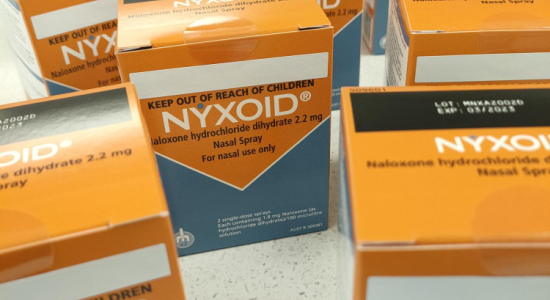Festival-goers more informed - and more cautious

Drug safety checking results from last summer’s festivals have landed. This is the second year in a row that KnowYourStuffNZ in partnership with the Drug Foundation offered harm reduction services at multiple festivals.
Using an infrared spectrometer and reagent tests festival goers have their substances accurately identified and have a discussion about how to be safer.
At least 20 new substances were detected for the first time this season. These were often more toxic and unpredictable than those seen previously.
A large proportion of the new drugs were cathinones one of which has since been identified as the cause of multiple emergency hospital admissions in Christchurch. Some as-yet unidentified substances also cropped up: these are so new that there are no reference samples in the global database linked to the spectrometer.
When given the option to make safer decisions more than half chose to do so. This year 58% said they would not take a drug when it was not what they thought it was. Those who decided to take the substance anyway said they would make safer decisions around dosage, how and where they used it.
The Drug Foundation will continue to support drug checking into the 2018/19 festival season. With an increase in unknown and highly toxic substances circulating in New Zealand this service is becoming increasingly crucial. The government needs to invest in drug checking and change the law to provide legal certainty to event organisers so this vital harm reduction service is more widely available.
58%
said they would not take a drug when it was not what they thought it was.Top 5 drugs people thought they had
| Last summer | This summer |
|
MDMA 51% |
MDMA 58% |
|
LSD 30% |
LSD 17% |
|
Unknown 6% |
Unknown 9% |
|
Cathinone 2% |
Ketamine 5% |
|
Amphetamine 2% |
Cocaine 3% |
All other drugs combined – last season 13%, this season 9%.
Top 5 drugs people really had
|
Last summer |
This summer |
| MDMA 40% | MDMA 54% |
| LSD 26% | LSD 15% |
| Cathinone 11% | Cathinone 7% |
| Could not be identified 4% | Ketamine 6% |
| Amphetamine 3% | Could not be identified 5% |
All other drugs combined – last season 16%, this season 13%.
Note: Testing identified 24/26 unknown substances that were previously unknown to the client. Please note that the figures for MDMA and LSD include a very small number of samples that were not the specific drug mentioned but from the same family – for example, MDA is included in MDMA.
How often was a sample what people thought it was?
|
|
Last summer | This summer |
| Consistent with presumed | 68% | 79% |
| Consistent with presumed but contained additional ingredients | 9% | 5% |
| Not consistent with presumed | 23% | 12% |
| Could not be identified | 0% | 4% |
| Total | 100% | 100% |
Note: in a significant number of cases, the client did not know what the substance tested was supposed to be. In this table, these samples were excluded. A change in ‘consistent with presumed but contained additional ingredients’ results may be due to changes in the way data is recorded.
44 psychoactive substances identified
|
4-methylamphetamine* |
methamphetamine | dextroamphetamine* | methylamphetamine* |
| unknown amphetamine* | MDEA | MDMA | MDA |
| 1p-LSD* | 4-ACO-DMT | 5-MEO-DIPT* | DMT |
| LSD | 5/6-APB | 2C-B | mescaline |
| caffeine | cocaine | ketamine | methoxetamine |
| ethylphenidate* | GBL | 4-chloroethcathinone* | 4-methylethcathinone |
| 4-methylpentedrone* | 4-methylbuphedrone* | alpha-PVP* | DMBDB* |
| mephedrone | methcathinone | methylone | n-ethylbuphedrone* |
| n-ethylpentylone | unknown cathinone* | 1-(2-chlorophenyl)- | piperazine |
| benzylpiperazine | unknown NBOMe* | 5-HTP | rauwolfia serpentina* |
| benzocaine* | acetophenetidin* | venlafaxine | quinidide gluconate* |
| fentanyl* |
* indicates substances identified for the first time this summer.
Note: 20 substances were seen for the first time, seven of which were cathinones. One cathinone could not be identified.
Finding out what substances really are - does it change people's behaviour?

Graph: When it is consistent with presumed (4% May take, 2% Will not take, 94% Will take)

Graph: When it is NOT consistent with presumed (14% May take, 58% Will not take, 28% Will take)
Resource
Read the full report on the KnowYourStuffNZ website.
Recent news

Beyond the bottle: Paddy, Guyon, and Lotta on life after alcohol
Well-known NZers share what it's like to live without alcohol in a culture that celebrates it at every turn

Funding boost and significant shift needed for health-based approach to drugs
A new paper sets out the Drug Foundation's vision for a health-based approach to drug harm

Expert Pharmac committee recommends funding for overdose reversal nasal spray
The expert committee has said funding for naloxone in the community should be a high priority

